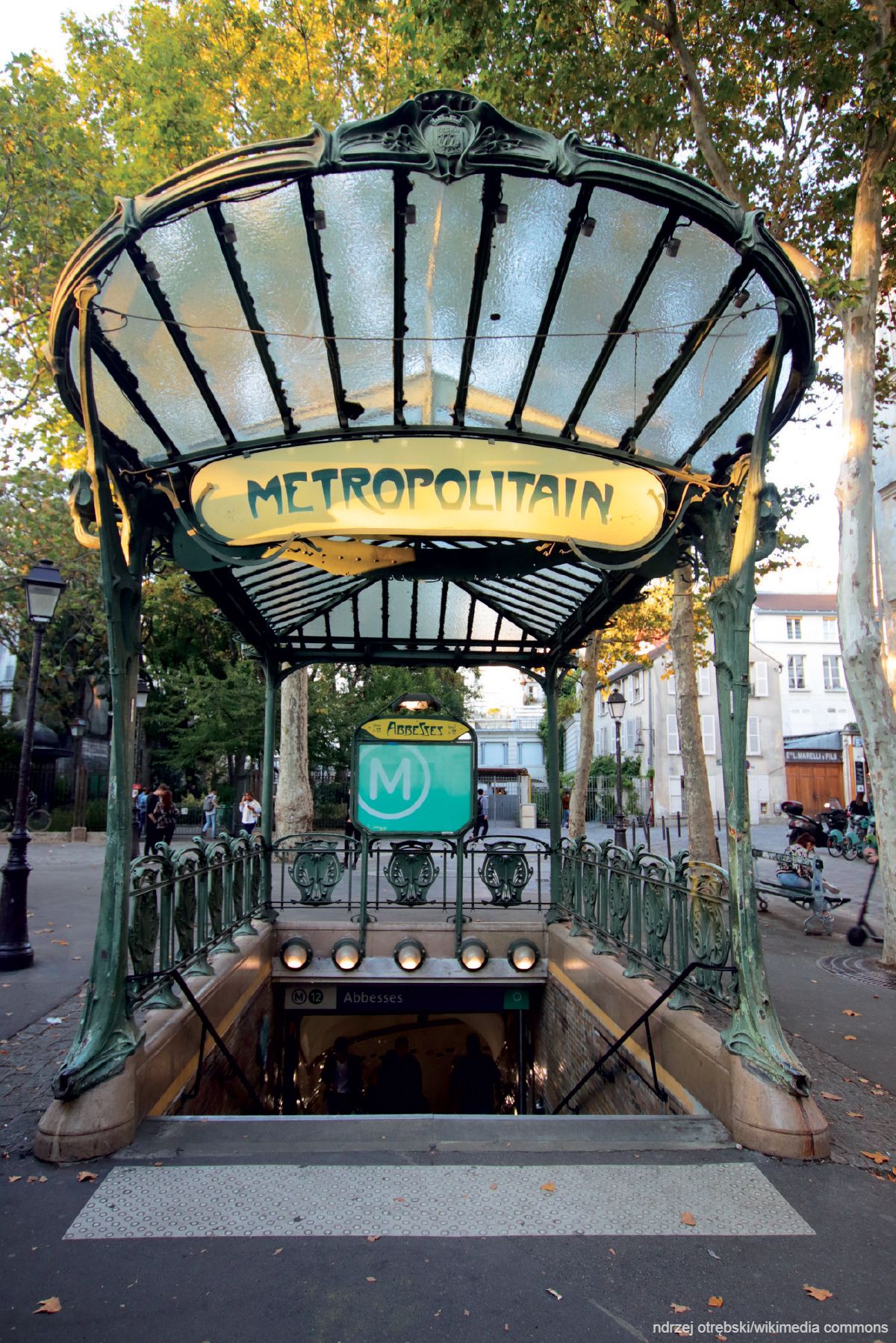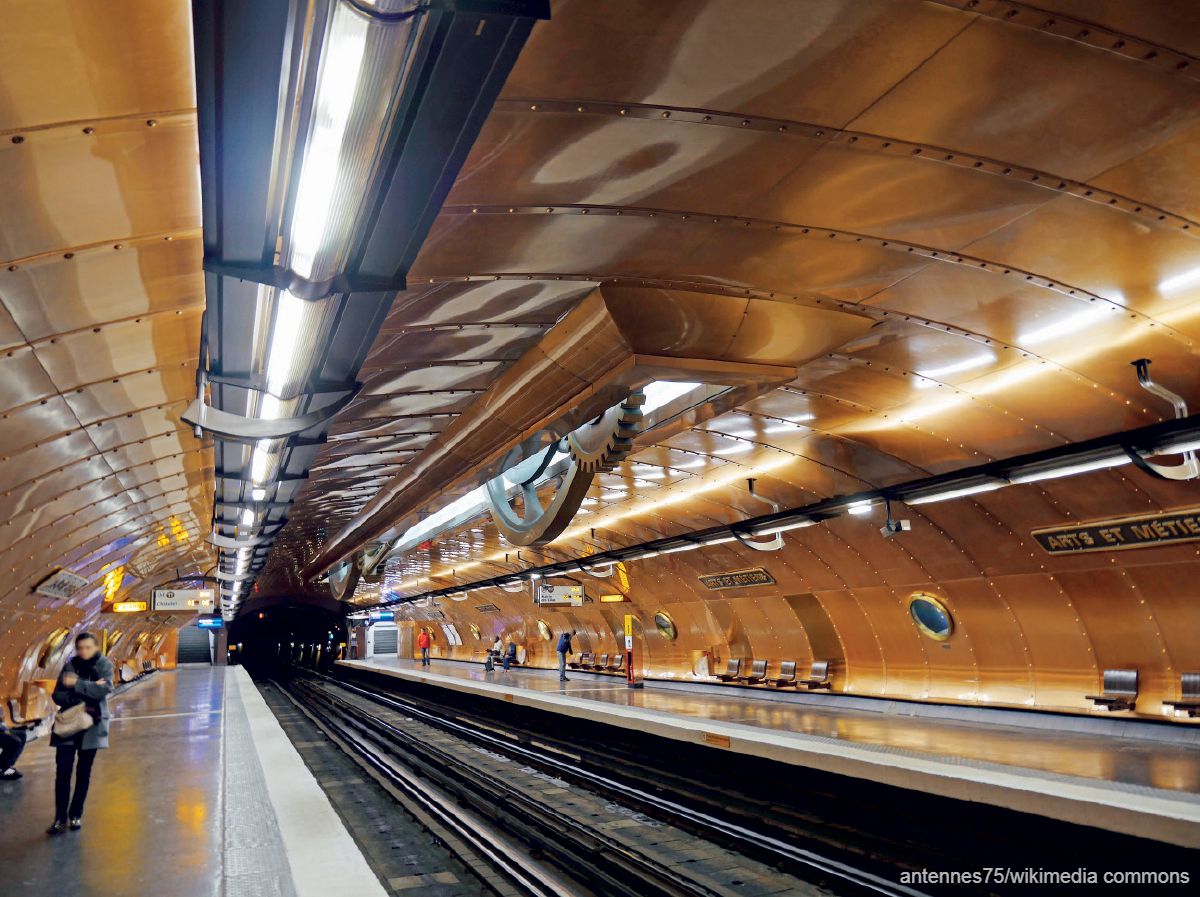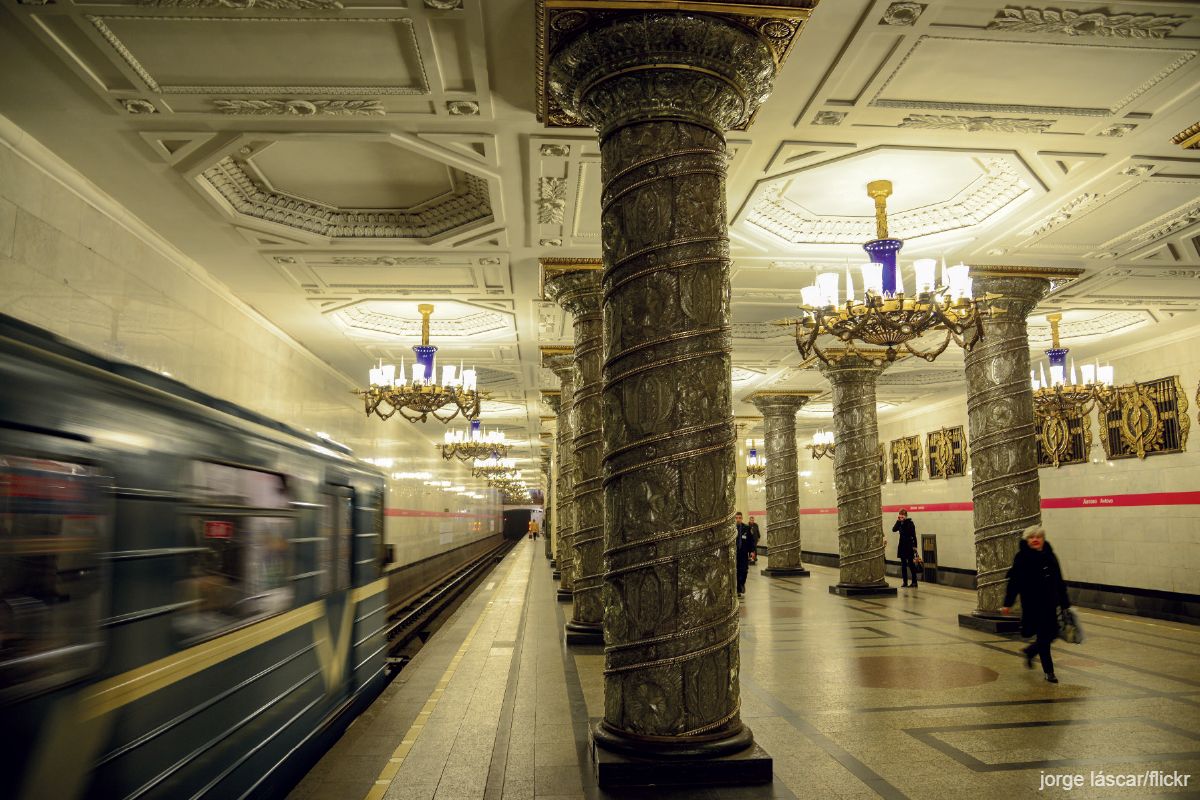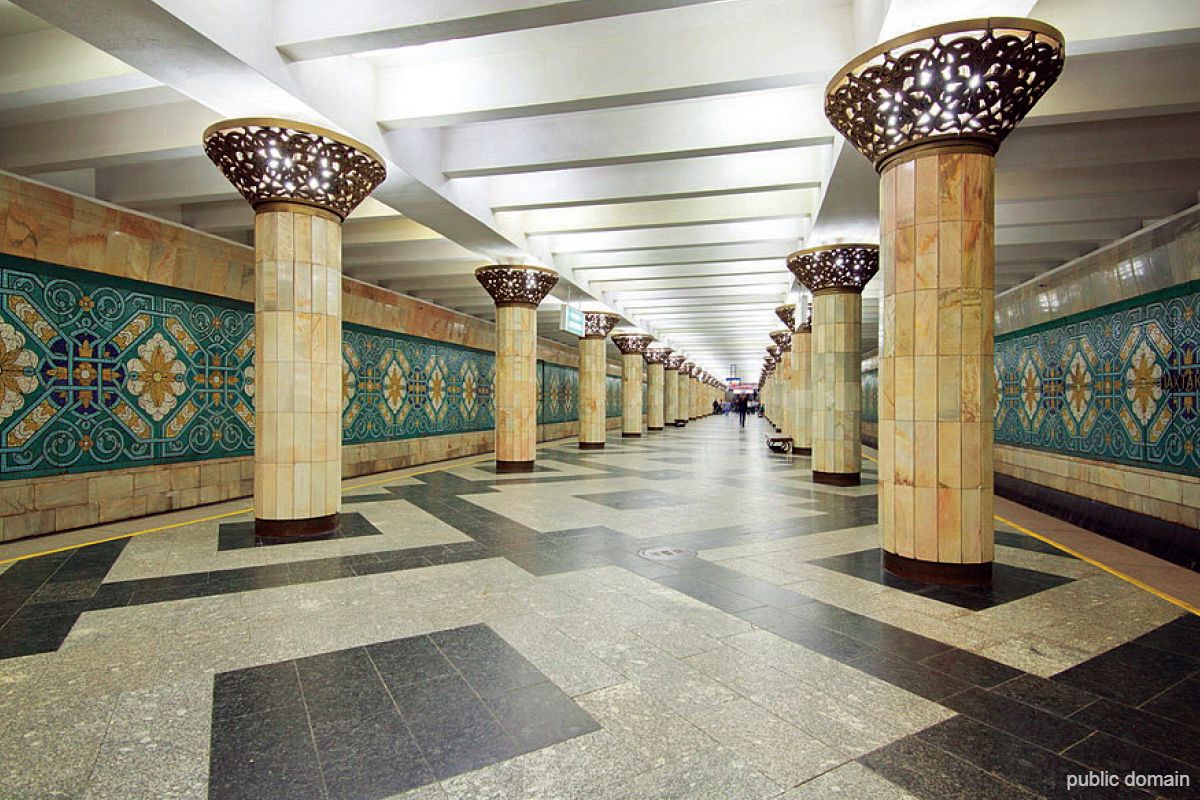
This article first appeared in City & Country, The Edge Malaysia Weekly on January 13, 2025 - January 19, 2025
Metro and subway stations in some countries take design to a whole new level. These artistic elements make the journey from one station to another more pleasant and a visual experience. Here are some stations that have captivated many and that make taking public transport less mundane.
Abbesses Station, Paris, France
The Art Nouveau-style metro entrance is a must-visit when in Paris. Designed by architect Hector Guimard, one of the founders of the Art Nouveau movement, the balustrade is adorned with intricately crafted medallions depicting leaves. This archway into the underground metro system was originally the entrance to the Hôtel-de-Ville Metro station on Rue Lobau, and was transferred to its current location in 1974. The whimsical fairy tale-like design gives the impression you’re about to be transported to a magical realm.
Arts et Métiers Station, Paris, France
This station was designed by Belgian cartoonist and scenographer François Schuiten, in collaboration with French scriptwriter Benoît Peeters. The inspiration for its metallic-machinery design is stories by Jules Verne, a French novelist, poet and playwright, who authored books such as Twenty Thousand Leagues Under the Sea and The Mysterious Island. Unveiled in 1994 to celebrate the bicentenary of the Conservatoire national des Arts et Métiers, the station has submarine elements such as portholes on the metal walls, and cogs and gears on the ceilings. The design is a metaphor for man’s search for knowledge.
Avtovo Station, St Petersburg, Russia
Avtovo, a station on the Kirovsko-Vyborgskaya Line of the St Petersburg Metro, was designed by Ye A Levinson and opened in November 1955. The columns have ornamental glass faces manufactured at the Lomonosov Imperial Porcelain Factory. Glass was to be used on all of the columns but due to time constraints, some used marble as a temporary fix but were never replaced. The space’s aristocratic ambience hark back to the days when opulence was commonplace.
Bell Station, Preston, Melbourne, Australia
Opened in 2022, Bell Station was built as part of the Victorian government’s Level Crossing Removal Project and is located in Preston, 9km northeast of Melbourne’s central business district. Its design pays tribute to the suburb’s rich heritage, weaving in elements inspired by post-war rooftops along with references to local art and culture. The station’s multicoloured elements are soothing and whimsical.
Formosa Boulevard Station, Kaohsiung City, Taiwan
The station designed by Shin Takamatsu is the largest domed underground station in the world. It is notable for its vibrantly coloured ceiling by Italian artist Narcissus Quagliata. Called The Dome of Light, the piece is 30m in diameter and covers 2,180 sq m. Quagalita created the piece by working with Derix Glasstudio in Germany and used 4,500 glass panels with images that represent water, earth, light and fire to symbolise birth, growth, glory and destruction respectively.
Jinsha Site Museum Station, Chengdu, China
Jinsha Site Museum Station on Line 7 of the Chengdu Metro system opened in 2017. Its bright green pillars are reminiscent of blocks in the game Minecraft and are complemented by intricate symbols and illustrations in striking colours, making this a vibranat place. The station serves as a direct connection to the Jinsha Site Museum, a major archaeological site that opened in 2007.
Grand Central Station, Manhattan, New York, the US
No list of great train and subway stations would be complete without New York’s Grand Central Station. Officially named Grand Central Terminal and opened in 1913, it is the biggest rail station in the world by number of platforms. The station’s Beaux-Arts architecture draws upon the principles of French neoclassicism and also incorporates Renaissance and Baroque elements. The aesthetic appeal is enhanced by sculpted art in and around the station. For instance, on the roof is a neoclassical sculpture called Transportation by Jules-Alexis Coutan, which explores the idea of transit using characters of mythology.
Olaias Metro Station, Lisbon, Portugal
Opened in 1998 to serve Expo ’98 visitors, Olaias Metro Station was designed by Portuguese architect Tomás Taveira with industrial-style columns and a kaleidoscope of vibrant colours, both on the platform and along the route passengers take to enter or exit the station. The entrance is adorned with tiles, an element for which the Portuguese are famous and that can be seen around Lisbon. There are also installation art pieces by artists such as Pedro Cabrita Reis, Graça Pereira Coutinho, Pedro Calapez and Rui Sanchez.
Komsomolskaya Station, Moscow, Russia
The Komsomolskaya station features domed ceilings with chandeliers that are reminiscent of the ballroom in Disney’s Beauty and the Beast. Opened in 1952, it was designed by Alexey Shchusev in the Russian architectural style of the 18th century. The walls and the columns are finished with light marble, and the floor is made from red granite. The vaults of the station are decorated with baroque stucco. Soviet artist Pavel Korin designed the huge mosaic panels of smalt and precious stones.
Toledo Station, Naples, Italy
Passengers may feel like they are entering a dream realm when in this station, which opened in 2012. The pièce de résistance is the Crater de Luz, or Crater of Light, created by Catalan artist and architect Oscar Tusquets Blanca. Surrounded by soothing blues and purples, the circular opening allows natural light in for an open and expansive feel. The station also has an underground museum that showcases historical remains dating back to different times, from ancient Greece and Roman Naples to the medieval period.
Nowy wiat-Uniwersytet Metro Station, Warsaw, Poland
This station with its futuristic design is a Trekkie’s playground. Circular cutouts in the ceiling look like teleportation devices waiting to beam people up to a spaceship. Opened in March 2015, it was designed by Polish architect Andrzej M Chodzysk and incorporated modern materials and designs such as black basalt, illuminated panels and suspended ceilings. This gives it a minimal, functional and bold look. Complementing the design are murals on the tunnel walls by the late Polish artist Wojciech Fangor.
Paxtakor Station, Tashkent, Uzbekistan
While it may not be as glamorous as some other metro stations, the Paxtakor station’s beauty comes from the unique geometric designs that are pleasing to the eye. The columns stand stoically as if to say that they are simply doing their duty holding up the ceiling. The Tashkent metro was opened in 1977, and photos and video recordings of this station were not allowed until June 1, 2018, when the ban was lifted by the new Uzbekistan leadership to develop the country’s tourism sector.
Yuyuan Garden Station, Shanghai, China
The ceiling design of the Yuyuan Garden station, which opened in 2022, emulates the waves of the Huangpu River. Designed by Xing Design, the “water wave” is created using tens of thousands of aluminium panels that were cut, bent and spliced. In combination with LED lighting, the ceiling can “change” colour according to different events, such as red for National Day and the Spring Festival, and pink for Valentine’s Day.
Szent Gellért tér Metro Station, Budapest, Hungary
Szent Gellért tér is located beneath the square named after St Gerard (Szent Gellért), patron saint of Budapest. Designed by Hungarian firm Spora Architects, Szent Gellért tér was opened in March 2014. One of its unique aspects is its curved psychedelic mosaic ceiling by Hungarian artist Tamás Komoróczky. At an angle, the ceiling represents a sense of movement even though the tiles are static. On closer inspection, passengers would notice a myriad of coloured tiles, expertly laid out for a kaleidoscope effect.
T-Centralen Metro Station, Stockholm, Sweden
For those who love blue, this is just the place to visit. The metro system was opened in 1957 but this particular station — called the blue-line platform or simply, the blue platform — was only opened in 1975. The station was painted by Finnish artist Per Olof Ultvedt, who used the colour blue to elicit a calming effect in contrast to the bustling underground station environment. The motifs depict natural elements like flowers, leaves and vines.
Westfriedhof Station, Munich, Germany
The Westfriedhof Station, which opened in 1998, has a groovy 1960s vibe. It was designed by architectural firm Auer-Weber while the lighting concept was created by German industrial designer Ingo Maurer. The platform is lit by 11 domed lighting fixtures measuring 3.8m in diameter and each illuminates the space with shades of blue, yellow and red. The walls were left rugged and raw, lit by a blue hue that gives the station a cave-like feel.
Wilhelminaplein Metro Station, Rotterdam, the Netherlands
The industrial, futuristic design of this station gives the impression that the Terminator could live here. Built under a courthouse, tax office and other offices, it was designed by architectural firm Zwarts & Jansma and opened in 1997. The station is located 16m deep at its lowest point, the deepest in the Netherlands. The designers put in an opening covered with transparent glass to allow natural daylight in, to reduce the feeling that you’re in a subterranean cavern.
World Trade Center Transportation Hub, New York City, US
Designed by Spanish architect Santiago Calatrava, the Oculus is part of the World Trade Center transport master plan by Daniel Libeskind and is home to 12 railway lines. Opened in 2016, the structure’s white metal-clad steel ribs reach up and out, symbolising a child’s hand releasing a dove. The structure’s orientation is a reminder of the Sept 11 attacks and the Oculus, the Latin word for “opening” or “eye”, features a skylight that allows light into the space. It is a beautiful reminder to cherish the people who matter in our lives and to never take life for granted.
Save by subscribing to us for your print and/or digital copy.
P/S: The Edge is also available on Apple's App Store and Android's Google Play.
- China warns nations not to cut US trade deals at its expense
- Crude palm oil's discount to soybean likely until 3Q, may spur Indian demand — analysts
- RHB IB turns bearish on Malaysian banks amid tariff worries and slowing growth
- Former Federal Court judge Suriyadi backs CJ Tengku Maimun amid criticism over Malta speech
- Three banks underwrite the entire retail portion of Main Market-bound Paradigm REIT


















